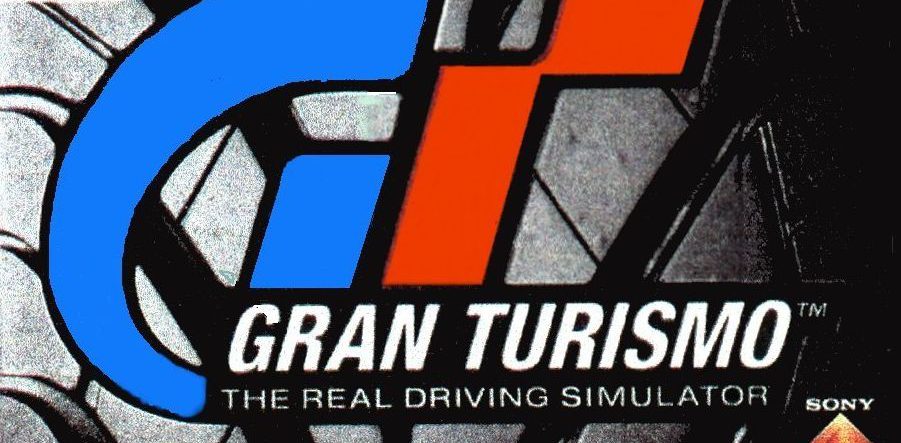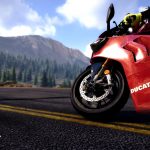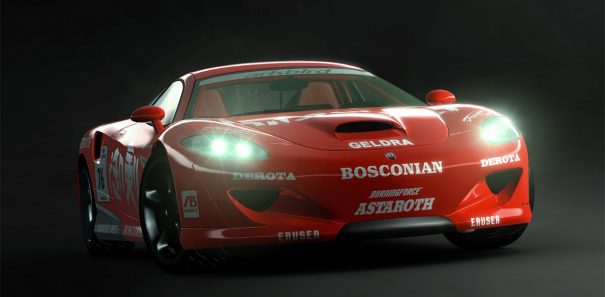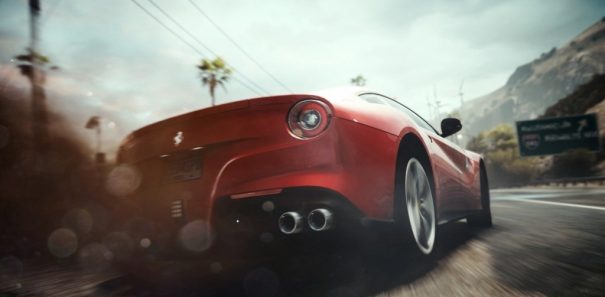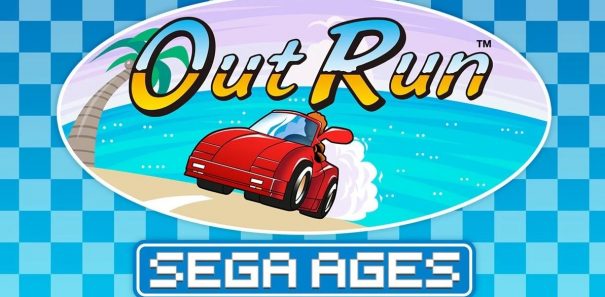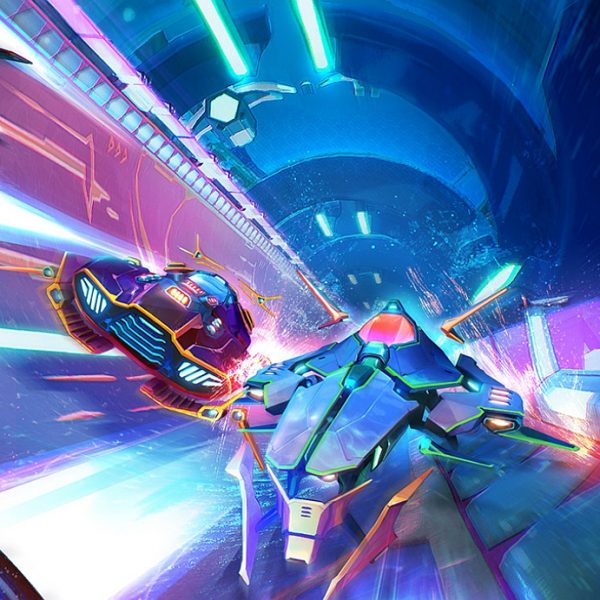Gran Turismo is now the world’s most famous automotive video game brand, a game more than 14 years in the making, but the journey to Gran Turismo 5 has not always been straight forward for its designer Kazunori Yamauchi and his company Polyphony Digital, a developer which first came to notable fame during the release of Motor Toon Grand Prix for the Sony Playstation in February 1995. The game was a heady fusion of seemingly drug fueled visuals and quirky design, including a range of off-beat racing characters which would sway from side to side as they drove along, this quirky approach extending to the unusual environments, indeed the Plastic Lake circuit was notable for its totally unique approach. But it was the quality of execution that stood Motor Toon out from the crowd, graphically the experience was trully mind blowing, fully gourad shaded graphics and effortless animation proved to be an exceptional use of the Playstation's architecture, if Ridge Racer wasn’t enough, this proved yet again that the system was not only ahead of its rivals but capable of greatness in the hands of the right developers. Though unusual it was clear Polyphony had the technical know-how to realize complex visions and bring them to reality.
With greater freedom the green light was instantly given for a sequel and Motor Toon Grand Prix 2 hit shelves in Japan mid 1996. This title was also revolutionary for its time in including a second bonus disc specifically for link-up play, which would include both the racing and a range of mini games. Again graphics were stunning and clear steps forward were made on the previous iteration in the series with highly ambitious tracks and environments, another stunning example of the power offered by Sony's console and Polyphony's skill in execution, but it was the handling model concealed within its abstract visual design that really impressed, Polyphony clearly had a great understanding and feel for the racing genre. Racing experts instantly got to grips with the unique but intuitive feel, this was more than the sum of its parts and those not interested in the visual approach soon realised that this model could ‘if adapted’ turn into something special. On completing the game this title also offered the unlockable ‘Motor Toon GTR’ which would prove to be the world’s first taster of what was to come. This featuring an Indy car and Nascar on a scaled down version of the Toon Island circuit running at a highly impressive 60fps. Vehicle handling within this mode initially felt dreadful bordering on impossible but practice revealed a playable model and the smooth visuals simply helped to reinforce this constant technical excellence.
As revealed in Motor Toon GTR the next project for Polyphony was to focus on a real driving simulator, moving completely away from their surreal racing routes. First screen-shots were released in mid 1997, not at any trade show and with little in the way of PR announcements. Instead it was released as a small sideline article in a range of western publications. The pictures though tiny were mind-blowing to a point that many players believed they couldn't be running in real-time. Due to the niche nature of the Motor Toon titles several publications had never even heard of Polyphony, let alone take their next release seriously, with some industry opinions holding little hope for their future titles. That was until later that year when a barrage of new shots were released, these altering opinion virtually overnight, visually beyond anything we had seen before, reflections mapped onto cars using new techniques, the games industry sat up and took notice, Gran Turismo was coming and it was going to be something special.
Christmas 1997 saw the release of Gran Turismo in Japan and with hype building at a rapid rate the game already had a lot to live up to. It delivered and surpassed all expectations with stunning technical performance displaying the most detailed cars ever seen in a console video game, incredible replays that were as much fun to watch as the game was to play and tied into a massive package of well over 250 cars. Like the original Motor Toon GTR, Gran Turismo also included a hidden 60fps mode with the ability to race round one of the Special Stage night circuits, again handling wasn't perfect but the fluidity of movement made this a compelling experience and yet another taster of the future.
On first play the scale of the vision was instantly apparent, a huge selection of curses, cars and options, while the first race would reveal the intuitive handling, it felt as real as anything that had ever been developed. Taking accurate racing lines, optimizing traction and then reviewing your progress with fabulous replays, the likes of which stand tall, even to this day! GT also included the need to earn driving licenses, a combination of good fun and enormous frustration, as a player who can only settle for gold I can safely put myself in the latter category. A new benchmark was set, now replacing Namco's Ridge Racer as the number 1 racing brand on the format receiving both public and critical praise, with games fans appreciating the steps forward and the motor industry taking note that this could herald a new era in games sales and their involvement. The US and European releases followed months later to massive commercial success repeating the wave of support it received in Japan while introducing a range of new players into the genre.
Gran Tursimo 2 was released almost 2 years later, following an internal buyout Polyphony Digital became an independent company while the extended development period (which has now become common place for this series) of the sequel appeared ridiculous for the era with PR campaign milking every aspect and giving the impression of an imminent release only for constant delays. On its arrival Gran Turismo 2 was initially received viewed as just as an add-on, appearing to reuse many tracks and assets from the first game. But on a detailed play, subtle changes had been made to every aspect with graphical refinement combining in a huge package, yet again reaffirming the titles dominance over the genre. This also established Gran Turismo as Sony's leading IP, with over 500 cars and including the rally racing genre, GT2 was without doubt the definitive console driving simulator of this era.
This automotive success was followed by a surprising change in direction for the developers, releasing Omega Boost in the latter half of 99’, this Mech based shooter was not only a surprise but a amazingly well crafted action game. Receiving high praise from the critics, another demonstration of the ingenuity and flexibility behind the visionaries within this ever growing development team.
GT2 sales continued to flourish and with the new Playstation 2 released in Japan in March 1999, Polyphony had been spending the last 6 months building anticipation of their next title, revealing shots and videos clips of the forthcoming title Gran Turismo 2000. This was to be an upgrade or add-on rather than an entirely new iteration in the series, however as development progressed and the regular stream of delays took hold it was clear that an add-on alone would not suffice. March 2001 finally saw the much anticipated release of Gran Turismo 3 A-Spec and the official Logitech steering wheel in Japan, again graphically it stood tall beating down all rivals on the format with its incredible presentation. Superlatives were given at every occasion but this was not to be a high point in the quality of the series. Despite the amazing technical performance and the considerable range of cars, the package was a bitty and incomplete one, token rally mode, few race tracks and still remaining with only 6 cars in a race. GT as a concept had changed course, it was now all about the cars and the racing element was starting to feel secondary. This was followed a year later by Gran Turismo Concept and as the title would suggest, this version included a collection of Concept cars that would range from interesting to ludicrous and the utterly bizarre.
Gran Turismo 4 again fell into the ongoing PR trap, the IP having such significance within Sony that PR was starting years before release of the eventual product. GT4 development delays affecting it so badly that the decision was eventually taken to release Gran Turismo 4 Prologue in 2003. This would operate as a teaser or taster for the eventual release of the full Gran Tursmo 4 in late December 2004, later released in the west around spring 2005. This title very much followed in the same steps as GT1 to GT2, expanding the package and introducing a wider range of cars with refined graphics. Again the field running a restricted number of cars, the game felt lacking in creativity, with a poorly executed rally mode and similar issues lacking in the package it felt a step back for the series trying to become a jack of all trades while not satisfying any one to an acceptable level and you can read that in greater detail in our GT4 Review. The team then focused its energy on Tourist Trophy – The Real Bike Simulator; in an effort to follow the success of the GT franchise, but unfortunately the game failed to generate the kind of excitement and with a feeling that the PS2 perhaps wasn't the best format for this vision. Following Tourist Trophy the focus was set to return to GT in the form of a PSP version, originally due in early 2005, then 2006, then early 2007 before being canceled. No official reason was given, the focus of Polyphony was to be on the Playstation 3 and Gran Turismo 5. However GT PSP returned out of nowhere in September 2009, then released within weeks in Japan and around the world, a curious hiccup to the often solid Sony PR machine.
The vision of Gran Turismo has always been hugely ambitious, more than a racing game, more than the cars itself. Gran Tursmo is a driving compendium that is about the very love of the creation of the automobile in every guise. Moving on to the Playstation 3 would prove Polyphony's biggest challenge to date. The benchmark had been set and now with the GT bandwagon moving onto the PS3 the vision must expand. Again a huge package was proposed with Gran Turismo 5 originally expected to hit in 2008 however as the project progressed the usual delays came into affect and given the success of the previous prologue titles GT5 Prologue was inevitable. Released early in 2008 to considerable acclaim the game retained the technical prowess of previous iterations but with a feeling in the general of being over clinical, with visuals providing a perfect yet lifeless feel. This version also failed to include the hoped for crash damage, which was promised by Polyphony in a future update but never materialized. However the inclusion of the Ferrari 2008 F1 car came as a wonderful surprise but like previous GT's, 1 car and 2 Formula 1 tracks does not make it a total experience, replays were stunning and despite Codemasters grabbing the official FIA video game license more F1 cars have were promised for download in the future though again failed to materialise.
Another key feature will be the inclusion of Gran Turismo TV (GT-TV), again blurring the lines between gaming and reality bringing the core enthusiast market together. Whether you're a car fan who's good or bad at gaming, GT intend to bridge that gulf using every possible information medium. We now look forward to Gran Turismo 5, with 1000 cars, weather, track editor besides a plethora of additional features. A new benchmark is coming and Polyphony have every opportunity to make sure they are going to be the ones setting the pace.


